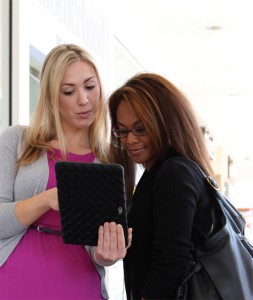 Want to know exactly why some shoppers are choosing one of your competitors’ stores over your own nearby location? Interactions has the solution. Its newly launched competitor research service is designed to help retailers determine which factors have the greatest impact on local shoppers’ decisions to shop a competitor’s location versus their own—and in the process, reveal solutions for bringing shoppers back into their stores.
Want to know exactly why some shoppers are choosing one of your competitors’ stores over your own nearby location? Interactions has the solution. Its newly launched competitor research service is designed to help retailers determine which factors have the greatest impact on local shoppers’ decisions to shop a competitor’s location versus their own—and in the process, reveal solutions for bringing shoppers back into their stores.
Like all of Interactions’ services, this new survey-based service is highly customizable. With guidance from Interactions, retailers choose which factors they want to evaluate (such as pricing, selection, atmosphere, parking or rewards programs) and which shoppers they want to target. For example, they can choose from shoppers who reside in a retailer’s overall region all the way down to those who live within the trade zone of a single store. The study of these latter, smaller areas of focus—which have traditionally been more difficult—are facilitated by Interactions’ consumer intercept surveys, where field associates poll shoppers right where they live and shop.
“We can help retailers get down to the level of granularity that they’re looking for—both geographically and in terms of shopping behaviors,” says David Zierman, Director of Insights for Interactions. “Our process doesn’t just ask for opinions. Instead, we use a method that mirrors how real decisions are made. We give shoppers choices—such as pricing or selection—and ask which is more important. Research has shown that answers to this type of questioning more closely reflect actual behavior.”
As part of the process, Interactions also has shoppers rate how the retailer’s store(s) and those of its nearby competitors measure up against the factors evaluated. Combined, the results can show what’s most important to local shoppers, as well as who’s providing the best and worst experience in those areas. They can also be analyzed to help predict what shoppers’ future behaviors will be if certain elements are changed.
“For example, if a retailer’s store came in at only 70 percent satisfaction in produce, we would be able to calculate and tell them that improving that score by X percent could increase their shopper base by up to Y percent,” explains Zierman.
Interactions can also offer services to help retailers turn these results into action. For example, Interactions is known for creating exciting events to raise awareness of changes a retailer is making in-store, while simultaneously performing ongoing audits or mystery shops to ensure those changes continue to be upheld.
“Other market research firms may be able to offer surveys,” says Zierman. “But we have the grocery expertise and analytics capabilities to bring retailers the kind of meaningful information they need to make better business decisions, bring back customers and improve the bottom line.”


